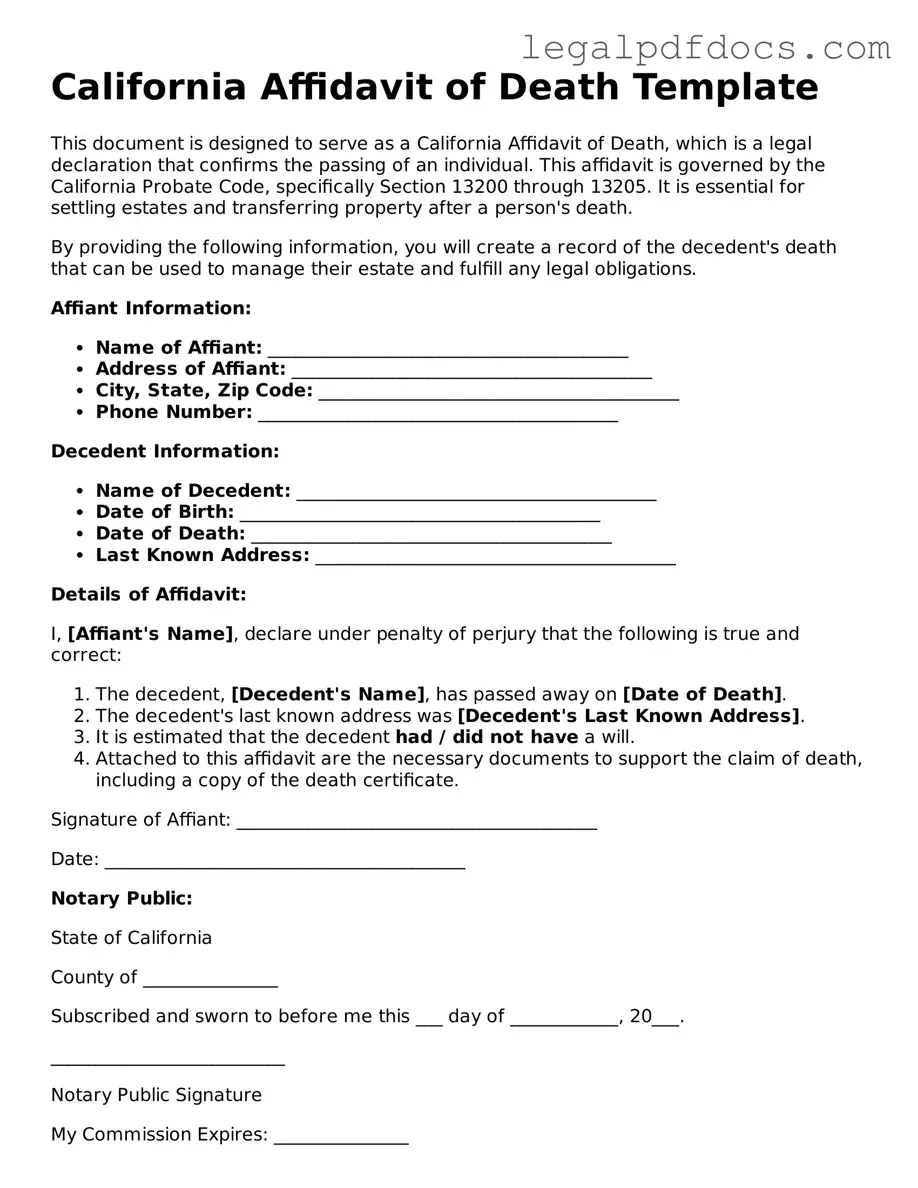Official Affidavit of Death Form for California
The California Affidavit of Death form is a legal document used to officially declare the passing of an individual. This form plays a crucial role in settling the deceased's estate and ensuring that assets are distributed according to their wishes. Understanding how to properly complete this form can simplify the process during a challenging time.
Ready to fill out the California Affidavit of Death form? Click the button below to get started!
Open Affidavit of Death Editor Here
